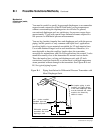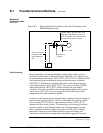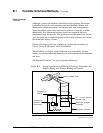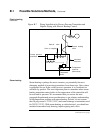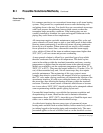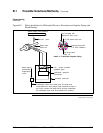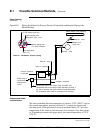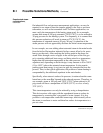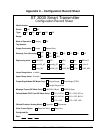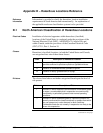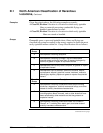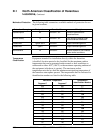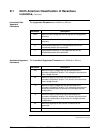
6/08 ST 3000 Release 300 and SFC Model STS103 User’s Manual 249
B.1 Possible Solutions/Methods, Continued
Superheated steam
considerations,
continued
On industrial flow and pressure measurement applications, we may be
required to use steam to heat the impulse piping to the flow or pressure
transmitter, as well as the transmitter itself. For these applications, we
must verify the temperature of the heating steam used. As an example,
assume that steam at 100 psig saturated (338°F/170°C) is to be reduced to
30 psig pressure for the heating system. Too frequently, it is assumed that
this pressure reduction will result in steam at 274°F (134°C), the
temperature of saturated steam at 30 psig. Wrong! A reduction of the
steam pressure will not appreciably decrease the initial steam temperature.
In our example, we were talking about saturated steam in the main header
from the boiler. But modern industrial boilers cannot afford to let waste
heat go up the stack. After reaching the boiling point in the drum, the
steam flows through a series of pipes in the second pass of the flue gas
exit, extracting additional heat energy and being raised to a temperature
higher than the saturation temperature at the same pressure. This is
superheat and, depending on boiler design, it may amount to 50 to 300°F
(10 to 149°C) above the saturated steam temperature. It also permits
packing more heat energy in a given size pipe for transmission from the
process. Thus, in the typical application, the problem of steam heating is
compounded by the additional superheat in the main header.
Specifically, when steam is reduced in pressure, it retains about the same
latent heat or the same Btu’s/pound at the reduced pressure. Therefore, in
our example, steam at 100 psig and 338°F (170°C) when reduced to 30
psig steam will have a temperature of 306°F (152°C) or a loss of only
32°F (18°C).
This steam temperature can only be reduced by using a desuperheater.
This device mixes cold water with the superheated steam to reduce its
temperature by removing Btu’s per pound of water (steam). It is also
possible to use temperature controlled steam traps, which actually allow
the steam to condense to water and therefore reduce its temperature to a
pre-set value.
Continued on next page



